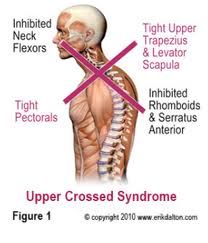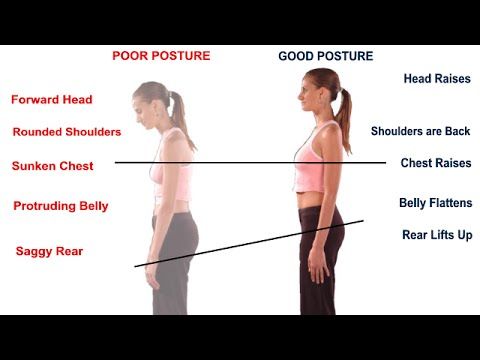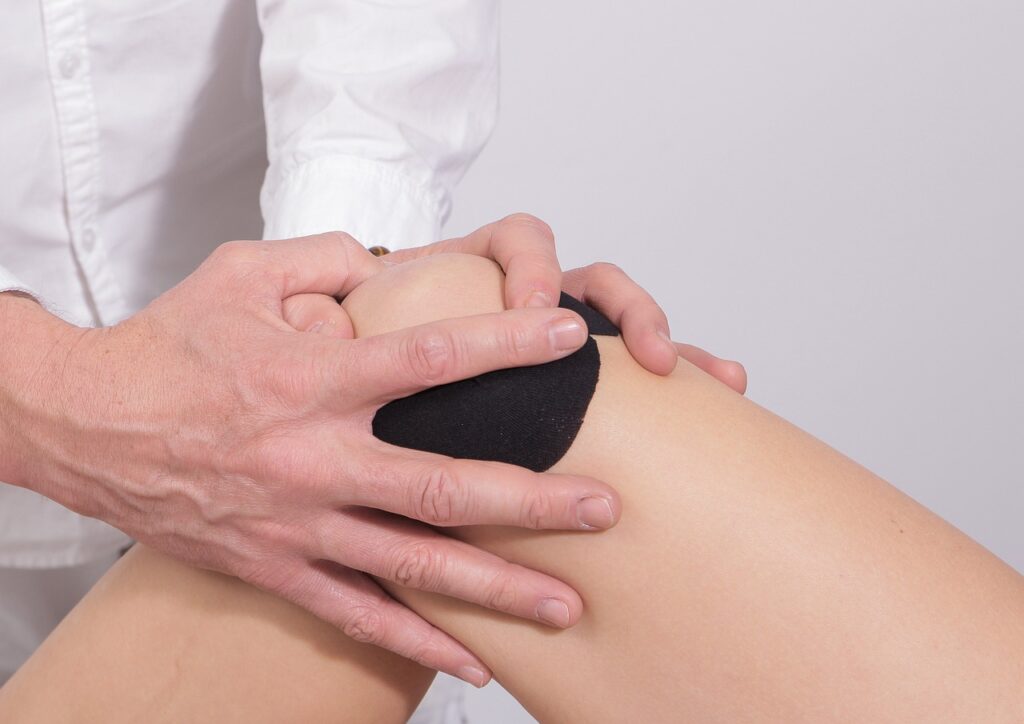Learning how to fix shoulder impingement is often a top priority for people who deal with it. From not being able to lift your arm without pain, to general shoulder and arm muscle weakness, shoulder impingement can have serious effects on your day-to-day life.
But what is the truth of the impingement of the shoulder and what really causes it?
It is not just your shoulder!
What Is Shoulder Impingement Syndrome?
Shoulder impingement syndrome is a pinching of the structures (tendons, bursae) that pass through a narrow tunnel between bones and ligaments of the shoulder.
With overuse/repetitive activities these structures become inflamed and swell.
Then they take up more room in the tunnel, so are pinched in certain shoulder positions such as reaching across your body and overhead causing shoulder pain.

It is never too late to correct these issues. I once successfully rehabbed an octogenarian competitive swimmer with shoulder impingement back to racing butterfly! And as a master’s swimmer myself, I know I have to keep working on these issues, or my shoulder pain will return.
What Causes Shoulder Impingement?
In a perfect world, your shoulder will not become painful with activities. But in reality, poor posture, tight and weak muscles create the perfect storm to inflame the tissues and cause your shoulder pain.


Poor Posture
When trying to understand how to fix shoulder impingement, it’s crucial to know how important a role your posture plays. Here are 5 reasons that poor posture can cause shoulder impingement syndrome:
- Slouched posture allows your shoulders and head to come forward to allow the chest muscles (pects) to become tightened.
2. Slouched posture does not use your back and scapular (shoulder blade) muscles to support your back and shoulders. This lets the muscles lengthen and weaken, so they become ineffective in supporting your back and shoulders with activities.
3. Continued slouching with activities such as computer work, home and yard work allows the tightening and weakening to progress to the point you are always in that position no matter what you are doing.
4. This changes the position and movement of the shoulder bones. The shoulder blade sits forward on your back and is at a bad angle. The humerus (arm bone) shifts forward in the socket of the scapula and allows tightening of the posterior capsule (soft tissues) at the back of the shoulder. This brings the tendons that connect to it (rotator cuff and long head biceps) under the acromion where they are pinched when you lift your arm overhead or reach in a forward motion. See above image
5. Repetitive activities such as swimming and overhead sports repeatedly bang the tendons against the ligaments and acromion if you are in a bad position, have bad technique or muscle weakness. This gradually irritates the tendons to cause swelling and inflammation. This will cause shoulder pain each time you lift your arm or reach forward to impinge the tendons. Then all overhead positions will become painful, even doing your hair!
Other Possible Shoulder Impingement Causes
- Poor posture also causes strain on your neck and tightness when you have head forward posture.
- If there is tightness of your neck joints and muscles it may cause irritation or compression on some nerves.
- If there is irritation to the nerves that go to your shoulder, there will be pain in your shoulder in your shoulder and weakness of the rotator cuff muscles. These muscles then do not function well and are more easily injured. If they are weak, they no longer stabilize your shoulder properly during motion.
How To Treat Shoulder Impingement: 7 Tips
Treatment of shoulder impingement syndrome should focus on prevention.
To fix your shoulder impingement you must fix your posture! If this stress goes on for a prolonged period of time it will permanently damage your rotator cuff tendons.
Want to get rid of your shoulder pain and get back to enjoying your activities?
Here are 7 tips to help your shoulder impingement syndrome now!
- You need to have proper back support while sitting to keep yourself in a good position. Remember to keep your head and shoulders back and avoid slouching. Do this by tucking your chin and pulling your shoulder blades back. This includes at your desk, in your vehicle and on the couch!
- Make sure your workstation works for you. Check that your desk and chair are at the right height. Your elbows should be bent to 90° so that you are in a relaxed position while typing at the keyboard. Do not reach or lean forward. Your mouse should be at the same height as your keyboard. Your screen should be at eye level to avoid tilting your head back or looking down for long periods of time. Keep your chin tucked to look forward at your screen.
3. Strengthening exercises for your back, shoulder blades will correct your posture to prevent shoulder impingement pain and improve how your shoulder moves. Start by pulling your shoulders back to sit up straight (just like your mother told you!).
You can use a resistance band to push against with your arms to strengthen your rotator cuff and pull your shoulder blades back at the same time.
4. Strengthening exercises for your rotator cuff muscles will strengthen the stabilizers of the shoulder to help prevent your shoulder pain while you move. The best exercises are with a stretchy band, not weights at first.
- Stretch your shoulders after exercise or other activities.
- Work with a coach to improve exercise/sport technique to prevent shoulder impingement syndrome from happening to you. They will see mistakes you are making, and ways to improve your stroke or technique. Or see a physiotherapist to get tips on proper body mechanics during your daily activities.
7. Take breaks during repetitive activities, whether it is work, housework, yard work or sports. Do a bit of stretching of the muscles you are using during your break to keep yourself from tightening up and irritating those tendons.
Conclusion
Shoulder impingement syndrome is preventable and treatable. Watch your posture and habitual movement techniques to prevent the causes of shoulder impingement and pain. If you have pain, get it treated!
- Want to get rid of your shoulder pain for good?
- Call us at 780-451-6263. We are here to help you.
- Or email [email protected] for more information.
- If you are looking to stay in the comfort of your own home, that is no problem. We can have one of our physiotherapists contact you over the phone or via video call for a consultation at your convenience.
- Free 10 minute phone consultation with one of our physiotherapists to discuss how we can help you
Frequently asked questions
How do you fix shoulder impingement?
To fix your shoulder impingement you must fix your posture! If this stress goes on for a prolonged period of time it will permanently damage your rotator cuff tendons.
Can you fix shoulder impingement?
Yes! And it does not have to be surgery. Do the proper exercises, correct your posture, and get treatment by a physiotherapist.
Can a shoulder impingement affect the neck?
Definitely. If you are protecting your shoulder, you might “hike” your shoulder up to lift your arm to avoid the pain. This will put strain on your neck, causing muscle tightness and pain.
Can Pull Ups cause shoulder impingement?
They should not if you are doing them properly. Just keep them low to begin with, and do not lift your body over your hands.
Can massage help with shoulder impingement syndrome?
Massage can work out the knots in your muscles and help release muscle tightness. Make sure it is therapeutic massage, not relaxation massage to get the best results.
Does shoulder impingement hurt all the time?
If there is not much inflammation, there should only be pain in the “impingement” positions. With more inflammation of the tendons, you may have pain at rest and with all movements. If this is the case, you definitely need treatment.
How do you release a shoulder impingement?
Impingement only happens when your arm is in certain positions that pinch the tendons. It is not an ongoing thing that can be “released”, but the factors causing the impingement need to be treated and corrected.
Good luck!
Leigh Garvie BScPT, MScPT, Clinical Sports Specialist, Olympic team Therapist, IMS,
Diploma Sports Physiotherapy, Diploma Advanced Manual and Manipulative Therapy



